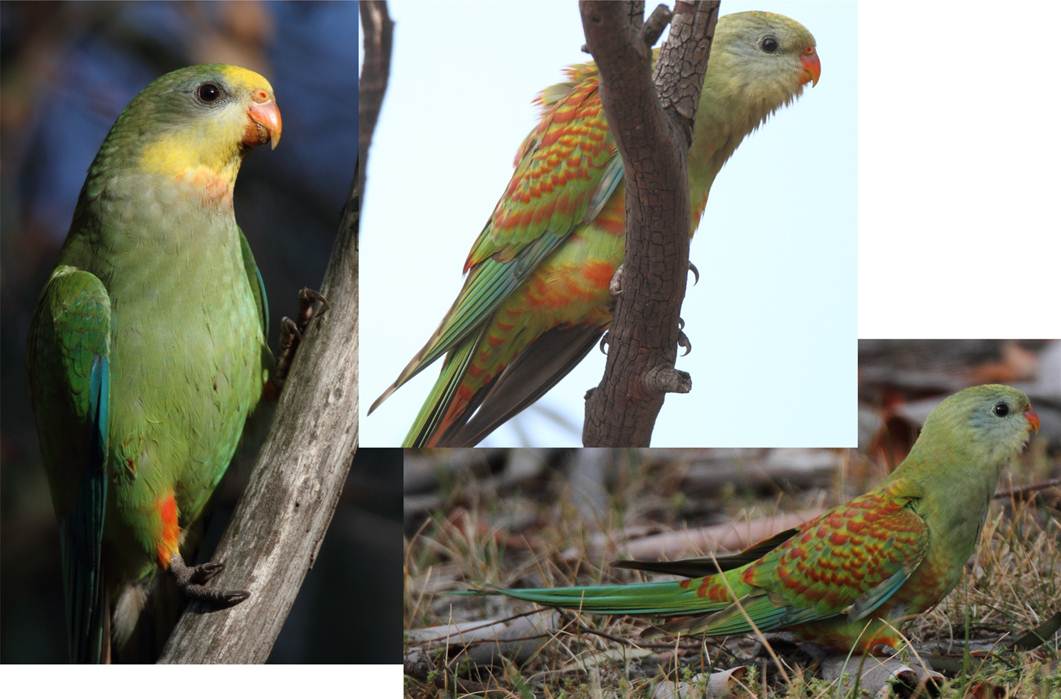Thanks Chris. It seems we don’t know all that much about plumage variations in these chaps - including bill colour phases (bearing in mind a past exchange about Swift Parrots). Putting in a couple of hours this morning I now have a range of variations including classic females, unmistakeably adult. However it does seem that begging juveniles can have bright red anklets (less red) , so that’s not the indicator I thought it might be.
Just on numbers etc, the following was today’s experience. I went back to AIS this morning at 0700. Superbs were distributed over several hectares, a few in the car-park but mainly ranging into the woodland going up into Bruce Ridge nature park and the CIT (Bruce Tafe as was). They seemed keen to feed on the ground, both in grassy woodland and on what can only be called ‘lawn’ in an enclosure the CIT horticultural area where a few seed heads were sticking up (about 20 there). I estimate at least 70 birds in the whole area, perhaps more than 100. The proportion of juvs is difficult. The adult males are easily IDed and I would put these at 20-30%, so assuming an equal number of adult females that would leave about 50% juvs OR, and here is the tricky part, second year sub-adults.
About 0830 I left to compare numbers at the Hawker playing fields. I kept an eye out for flying superbs along the way, but only noticed one flock of about 8 near the Jammo Centre heading south towards to Cook. Going by sound I found about 20 feeding on the ground near Murranji St near the Hawker College. All the birds on the ground appeared to be adults. There were a few others flying around and some distant begging. Later I found 4 juvs being fed at the top of a tree in the small reserve directly opposite Hawker College - about 200m from the ground-feeding site. I estimate the number in that general area at at least 40, giving a total for just those 2 Canberra sites of over 110.
Just a bit more on plumages. Below is a presumed early-second year male. Note that it still has the red anklets of the female and juv. Also - and this was perhaps the highlight - there was a beautifully marked presumed mutant with the Hawker group - see below.

From: Chris Davey [
Sent: Tuesday, 17 January 2012 9:46 PM
To: 'Geoffrey Dabb';
Subject: RE: [canberrabirds] Superb Parrots - Immatures feeding each other?
Hi, I can remember talking to various aviculturists some time back and they told me that it is very difficult, even in an aviary to tell young of the year from adult females after a coup[le of weeks. If true this is very interesting for it means that there is either a very quick moult into a different plumage (which I do not agree with) or somehow the feathers change with age. I was told that the only way you can tell is that the tail remains short for a little while after emergence from the breeding hollow. It would be interesting to hear from anyone with aviary experience of this birds.
Chris
Paul - I agree. Either the plumage descriptions are wildly astray or there is feeding of juveniles by other first-year birds, query whether the same brood. In the below the 3 left-hand birds are females with developed mandibles and red thighs. The 3 on the left are from a long feeding sequence. The feeding bird seems to be first-year. No red thighs, for one thing.

